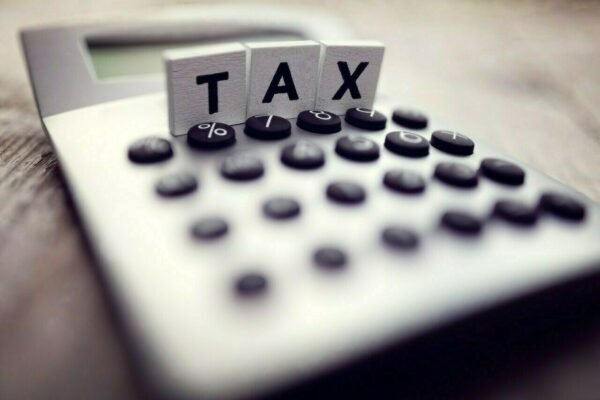Bridging the huge tax gap

16 February 2024
Published in: Business Recorder
The new coalition federal government will soon be in power, after controversial elections of February 8 2024, allegedly marred with post-voting manipulated results to favour the favourite. These were the first non-inclusive elections in country’s history, depriving Pakistan Tehreek-e-Insaf (PTI) of its symbol (cricket bat).
The biggest challenge before the new finance minister soon after taking oath would be preparation of federal budget for fiscal year 2024-25, historically presented in the second week of June every year. March 2024 is going to be extremely crucial, as the final tranche of US$3 billion Standby Arrangement (SBA), will be due, subject to successful review by the team of International Monetary Fund (IMF).
We received the second tranche of US$ 705.6 million on January 18, 2024. IMF remitted the first instalment of US$ 1.2 billion on July 13, 2023 after approval of much-needed SBA by the Executive Board of IMF.
Since Pakistan has to successfully complete the ongoing SBA to negotiate yet another long-term extended facility programme with IMF, we need a federal finance minister, who can handle these matters on urgent basis besides bringing the country out of the worst economic crisis of its entire history.
Pakistan is expecting a historic high fiscal deficit of over Rs. 5,000 billion in the current fiscal year (FY) 2024. In these circumstances, we need to drastically cut wasteful expenses [Tax reforms: Agenda for Self-Sustainability, Management Accountant, Volume 31.2 [pp 36-38], March-April 2022] and harness the real tax potential, which at the level of Federal Board of Revenue (FBR) alone is Rs. 20 trillion, if not more—the working below confirms this statement as well as the study, Towards Flat, Low-rate, Broad and Predictable Taxes[PRIME Institute, Islamabad, December 2020].
Total population of Pakistan as per last census of 2017 was 220 million. The current population, according to reliable estimates is 243,414,471—online data by Worldmeter as of 13 February 2024. Based on 2017 census, population between 15-64 years age group is 59% [129.8 million].
The employment rate, according to official sources, is 47.9%. Thus, the total employed population is around 62 million (a very conservative estimate). However, the existing individual income tax return filers as per FBR’s Active Taxpayers’ List (ATL) as on 12 February 2024 was 3,930,966. Among these “filers”, over sixty percent have showed below taxable income or losses.
Let us work out taxable base of income tax (individuals) out of total employed population based on official figures (though these are on the lower side). Assuming that10% [6.2 million] have monthly income exceeding Rs.800,000 and 20% [12.4 million] between Rs. 600,000 and 700,000, and the rest below taxable limit (Rs. 600,000).
Applying existing rates of salary (for convenience) to 21 million potential taxpayers, the figure comes to Rs.7trillion. At present, out of total registered companies, sixty percent tare not filing income tax returns. Assuming average tax of Rs.5 million per company, tax potential comes to Rs.3000 billion.
Collection of income tax by FBR in fiscal year 2022-23 wa sRs.3086 billion(companies, individuals, firms and association of persons) making total income tax potential alone not less than Rs.11 trillion. In fiscal year 2022-23 collection of sales tax by FBR was Rs. 2591 billion, whereas the actual potential is not less than Rs. 7 trillion.
Similarly, potential of Customs Duty (using 5% rate on US$100 billion base could fetch Rs.1300 billion). Federal Excise Duty (FED) even if kept at current position can fetch Rs. 700 billion. In fiscal year 2022-23, FBR collected Rs 370 billion under FED and Rs. 932 billion under customs duties whereas original targets wereRs. 402 and Rs. 953 billion respectively.
In view of above, total tax potential at FBR level comes to Rs.20 trillion [Income Tax: Rs.11 trillion; Sales Tax:7 trillion; Customs Duty: Rs. 1300 billion and FED Rs. 700 billion].
As established above and in Towards Flat, Low-rate, Broad and Predictable Taxes[PRIME Institute, Islamabad, December 2020], there is a huge tax gap in Pakistan that is attributable to bad tax policy.
According to Pakistan Telecommunication Authority (PTA), the total number of mobile cellular subscribers as on December 31, 2023 was 189 million (78.93% mobile teledensity), out of these, 128 million were broadband users (53.20% mobile broadband penetration), 3 million basic telephony users (1.07 fixed teledensity) and 131 million broadband subscribers (54.58% broadband penetration).
Not less than 120 million unique mobile users (many having more than one SIM) are paying advance/adjustable income tax of 15%with effect from January 15, 2022, imposed through Finance (Supplementary) Act, 2022. Out of around120 million unique mobile users, 21 million, having taxable income as per above analysis are liable to file income tax returns. However, the existing gap is of 17 million individuals.
While the number of individual income tax filers is pathetically low, the entire taxable population and even those having no income or income below taxable limit are paying advance and adjustable income tax at source as mobile users. If they all file income tax returns, there will be refund payable to at least 79 million having no income or income below taxable limit though cost to claim would be much higher than amount withheld.
FBR must collect taxes where due and not in advance or from those not chargeable to tax. Sadly 75 paisas (one Pak rupee contains 100 paisas) FED on cell call exceeding 5-minutes was levied in the Finance Act 2021 in utter apathy towards the poor.
It was also in violation of the Constitution of Pakistan as held by Sindh High Court in its judgement in the case of certain telecoms [reported as (2023) 125 Tax 401 ((H.C. Kar)] endorsing Pakistan International Freight Forwarding Association v Province of Sindh & Another [(2016) 114 TAX 413 (H.C. Kar.) challenged in the Supreme Court by FBR.
Apart from the issue of constitutionality, it is a bad tax policy measure—impractical to implement for operators, anti-poor, and inconsequential to FBR’s efforts to raise desired revenue through already oppressive indirect taxes.
FBR has never bothered to determine fair and equitable income tax base from the data of about 120 million unique mobile subscribers using details of their calling patterns, bills, handset ownership status, assets, travel abroad, payment of utility bills, fees for children etc.
All of them have been paying advance adjustable income tax. Those not chargeable to income tax under the law, cannot be subjected to advance tax as held by Lahore High Court in Union Bank Ltd. v Federation of Pakistan (1998) 77 TAX 125 (H.C. Lah.) and Lone Cold Storage, Lahore v Revenue officers, Lahore Electric Power Co., and others (2011) 103 TAX 5 (H.C. Lah.).
Successive governments have been taxing the less-privileged and downtrodden. Why are the poor subjected to oppressive taxes like 75 paisa for cell call exceeding 5-minutes and 15% advance income on mobile and/or internet use from July 15, 2022 (earlier the rate was 10% and promised to be reduced to 8% with effect from July 1, 2022 through Finance Act, 2012)?
The rich and mighty are still enjoying tax-free perks and benefits. Heavy taxation on electricity bills and a number of food items and articles of daily use is highly unjustified when tax expenditure was above Rs. 1.5 billion since financial year 2020-21.
Tax credits for senior citizens and special people that was available before enhancement of tax rates by Finance Act, 2019should have been restored after the higher tax rates were revived soon after coming into power by the government of Pakistan Tehreek-e-Insaf.
It is now a test case for the new coalition federal government. None of the governments in the past has lowered the rate of taxes and allowed capital formation to accelerate high and sustainable growth by investing in productive sectors, and heavily tax unproductive investments in open plots etc.
It is possible only through simplified tax regime as elaborated in Towards Flat, Low-rate, Broad and Predictable Taxes. The relief given to small and medium enterprises (SMEs) as manufacturers up to turnover of Rs. 250 million in the Finance Act, 2021, should have been for retailers and other taxpayers as well, without any discrimination. Low-rate tax on broad base with simple compliance procedure alone can help in collecting Rs. 20 trillion as discussed above.
Tax policy reforms undertaken to date, have mainly been a patchwork, and proven to be futile exercises. Tax reform commissions and consultative committees, constituted for reforming the system, have remained unsuccessful as they have been suggesting remedies for curing the incurable or otherwise curing symptoms rather than addressing the causes.
Successive governments—civil and military alike—have shown a lukewarm attitude in restructuring the ineffective, outmoded, colonial era institutions, including the country’s tax system to achieve efficiency, equity and to promote economic growth. The now stayed restructuring plan of FBR, approved under the caretaker government, was yet another bureaucratic exercise ignoring the input from stakeholders and experts.
Bad tax policy, complex tax codes, complicated procedures, reliance on easily collectable indirect taxes, weak enforcement, inefficiencies, incompetence and corruption are the main factors for low tax collection.
Instead of broadening the tax base and simplifying laws, successive governments have been offering amnesties, immunities, tax-free perks/perquisites to powerful segments of society. As a result of this policy mindset, ordinary businesses and citizens continue to suffer.
It has been repeatedly discussed and pleaded in various columns and books that the only solution is revamping and restructuring of the entire tax system, low-rate, broad-based and predictable taxes, single national tax agency and national tax court, which the new coalition government will hopefully consider seriously.





